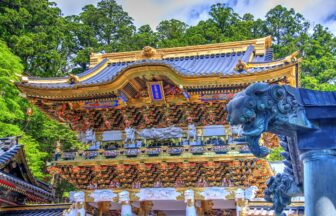Contents
Be Prepared for Hiking Risks as an Individual Traveler
Common Concerns for Those Who Want to Hike in Japan



Prepare Thoroughly Ahead of Time
The Potential Danger Due to Extreme Weather

Japanese hiking trails are not as well-equipped for foreign tourists compared to Europe. Additionally, the recent impact of extreme weather increases the risk of unforeseen natural disasters, necessitating thorough preparation. However, foreign travelers often have limited access to such information. Preparing appropriate clothing and gear can be challenging, and language barriers can turn hiking into a stressful experience.
To ensure you have a fantastic hiking experience in Japan, we recommend the following three types of hiking courses:
Recommendation 1: Popular Day-Hike Trails
These are popular hiking courses that can be done as day trips from cities like Tokyo and Osaka. Many of these trails feature cable cars and ropeways, making them accessible and enjoyable even for beginners.
Recommendation 2: Well-Equipped Hiking Trails
These are some of Japan’s premier hiking courses. With over 70% of Japan’s land being mountainous, there are numerous trails across the country. We highlight those that are well-equipped and safe for international tourists to enjoy.
Recommendation 3: Guided Hiking Tours for Safety
Lastly, we recommend guided hiking tours. With a guide, you can navigate unfamiliar paths without worry and gain a deeper understanding of the surrounding history and culture.
With countless hiking trails in Japan, it can be challenging to decide which one will provide you with the most memorable experience. As a helpful guide, our editorial team has marked our top recommendations with a “Must Visit” red label. These trails not only allow you to feel the terrain of the Japanese archipelago, where over 70% is mountainous, but also offer unique opportunities to explore the rich history and culture of each area.
Which Hiking Trail is Right for You?
Recommendation 1: Popular Day-Hike Trails
Popular Hiking Trails Around Tokyo
Mt. Takao (Tokyo) Must Visit
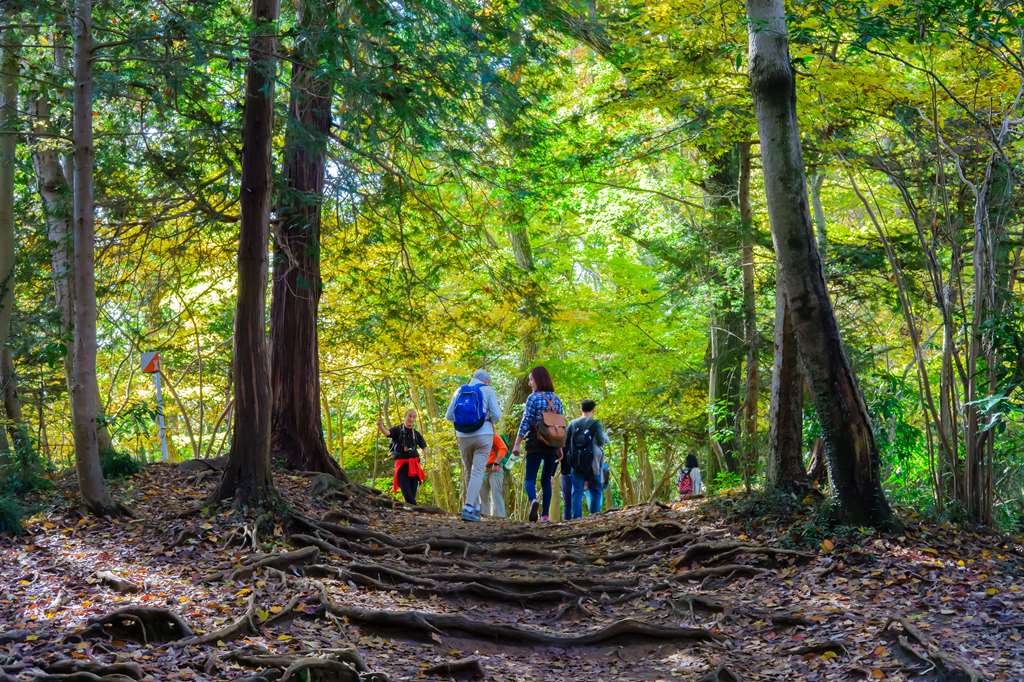
Easily accessible from Tokyo, Mt. Takao offers trails suitable for beginners to advanced hikers. The view from the summit and the Yakuoin Temple are major attractions.
Mount Takao is extremely popular among both domestic and international tourists, especially since it received a three-star rating from the Michelin Guide. Therefore, it gets very crowded, particularly on weekends, so plan your trip with ample time.
See More
Basic Information
| Best Season to Visit | Spring (cherry blossoms) and Autumn (colorful foliage). |
| Address | Takao-machi, Hachioji, Tokyo 193-0844, Japan |
| Access |
|
| General Hiking Information (Using Cable Car) |
|
| Editorial Note | A perfect escape from Tokyo, offering both easy and challenging hikes with stunning views and cultural experiences. Don’t miss the local Tororo Soba. |
Mt. Oyama (Kanagawa)
Mt. Oyama in Kanagawa offers well-maintained trails and stunning views. The Oyama Afuri Shrine and the surrounding nature provide a peaceful hiking experience.
See More
Basic Information
| Best Season to Visit | Spring (cherry blossoms) and Autumn (colorful foliage). |
| Address | Isehara, Kanagawa 259-1107, Japan |
| Access |
|
| General Hiking Information (Using Cable Car) |
|
| Editorial Note | Mount Oyama is a great destination for a day trip from Tokyo, offering both natural beauty and historical sites. Be sure to visit Afuri Shrine and enjoy the scenic views. Don’t miss the local specialty, Oyama tofu. |
Mt. Nokogiri (Chiba)
Mt. Nokogiri in Chiba features impressive rock formations and panoramic views of Tokyo Bay. The Nihonji Temple and its giant Buddha statue are must-sees.
See More
Basic Information
| Best Season to Visit | Spring and Autumn. |
| Address | Motona, Kyonan-machi, Awa-gun, Chiba 299-2100, Japan |
| Access |
|
| General Hiking Information (Using Ropeway) |
|
| Editorial Note | Mount Nokogiri offers a unique hiking experience with stunning views of Tokyo Bay and fascinating historical sites. It’s a perfect day trip for those looking to combine nature and culture. Don’t miss the breathtaking views from “Hell Peek Point” and the impressive Nihonji Daibutsu. |
Popular Hiking Trails Around Osaka
Minoo (Osaka)

The Minoo Hiking Course, located just north of Osaka, is a perfect escape for nature lovers visiting the city. This easy and accessible trail is ideal for beginners and offers a variety of attractions along the way.
The highlight of the hike is the beautiful Minoo Waterfall, a stunning 33-meter waterfall that provides a picturesque backdrop, especially vibrant in autumn when the leaves turn brilliant shades of red and orange.
See More
Basic Information
| Best Season to Visit | Autumn (colorful foliage) and Spring (cherry blossoms). |
| Address | Minoo Park, Minoo, Osaka 562-0002, Japan |
| Access |
|
| General Hiking Information |
|
| Editorial Note | Minoo offers a serene escape from the city with its beautiful waterfall and lush greenery. It’s an easy and enjoyable hike for families and nature lovers. Don’t forget to try the local specialty, maple leaf tempura, available at shops along the trail. |
Mt. Ikoma (Osaka/Nara)
Mt. Ikoma straddles Osaka and Nara, offering gentle trails and panoramic city views. The Hozanji Temple and the cable car ride add cultural interest to your hike.
See More
Basic Information
| Best Season to Visit | Spring and Autumn. |
| Address | Ikoma, Nara 630-0231, Japan |
| Access |
|
| General Hiking Information (Using Cable Car) |
|
| Editorial Note | Mount Ikoma offers a mix of nature and cultural experiences, with stunning views and historical temples. It’s a great spot for a day hike, suitable for all ages. Be sure to explore the Hozanji Temple complex and enjoy the peaceful surroundings. |
Popular Hiking Trails Around Hiroshima
Mt. Misen (Hiroshima)

Located on Miyajima Island, Mt. Misen is a spiritual mountain with trails leading to the summit. The summit offers spectacular views of the Seto Inland Sea, and the Daisho-in Temple along the way adds a cultural dimension to the hike. A ropeway is available for those who prefer a shorter hike.
See More
Basic Information
| Best Season to Visit | Spring and Autumn. |
| Address | Miyajima, Hatsukaichi, Hiroshima 739-0588, Japan |
| Access |
|
| General Hiking Information (Using Ropeway) |
|
| Editorial Note | Mount Misen offers a combination of breathtaking views and historical significance. The hike provides a rewarding experience with stunning scenery and cultural landmarks. Be sure to explore the surrounding area, including the famous Itsukushima Shrine. |
Recommendation 2: Well-Equipped Hiking Trails
Oirase Gorge (Aomori)

Oirase Gorge in Aomori is renowned for its scenic beauty, featuring a series of waterfalls and lush greenery. The well-maintained paths make it accessible for beginners.
See More
Basic Information
| Best Season to Visit | Spring (fresh greenery) and Autumn (colorful foliage). |
| Address | Okuse, Towada, Aomori 034-0301, Japan |
| Access |
|
| General Hiking Information |
|
| Editorial Note | Oirase Gorge is renowned for its stunning natural beauty, with crystal-clear streams, waterfalls, and lush greenery. It’s an ideal destination for a scenic and peaceful hike. Don’t miss the breathtaking autumn colors and the serene atmosphere of Lake Towada at the end of the trail. |
Goshikinuma (Fukushima)

Located in Fukushima, the Goshikinuma area is famous for its five colorful lakes. The trail is easy to follow, and the vibrant colors of the lakes are mesmerizing.
See More
Basic Information
| Best Season to Visit | Spring, Summer, and Autumn (best for colorful foliage). |
| Address | Kitashiobara, Yama District, Fukushima 969-2701, Japan |
| Access |
|
| General Hiking Information |
|
| Editorial Note | Goshikinuma, or the Five Colored Ponds, offers a mesmerizing hike with vibrant colors and serene landscapes. It’s an easy and accessible trail, perfect for nature lovers and photographers. Each pond’s unique color changes with the seasons, providing a magical experience year-round. |
Nikko – Lake Chuzenji Area Must Visit

Located in Tochigi, the trails around Lake Chuzenji offer breathtaking views of the lake and surrounding mountains. Accessible by cable car, the area is beginner-friendly and ideal for those looking to combine hiking with cultural sightseeing.
Nikko is very crowded from mid-October to early November when the autumn leaves are at their peak. Be sure to book hotels and tours early. Also, plan to start your trip to Lake Chuzenji early in the day.
See More
Basic Information
| Best Season to Visit | Spring, Summer, and Autumn (best for colorful foliage). |
| Address | Nikko, Tochigi 321-1661, Japan |
| Access |
|
| General Hiking Information |
|
| Editorial Note | The Nikko – Lake Chuzenji area is renowned for its natural beauty and historical significance. With a variety of trails and stunning scenery, it’s an excellent destination for both casual walkers and avid hikers. Enjoy the serene views of Lake Chuzenji, and don’t miss the spectacular Kegon Falls nearby. |
Mt. Fuji 5th Station Area

Starting from the 5th Station of Mt. Fuji, you can enjoy a moderate hike with stunning views of the iconic mountain. This area is well-equipped and suitable for beginners who want to experience Japan’s tallest peak without a full summit attempt.
See More
Basic Information
| Best Season to Visit | Late Spring to Early Autumn (May to October). |
| Address | Mount Fuji 5th Station, Fujinomiya, Shizuoka 418-0112, Japan |
| Access |
|
| General Hiking Information |
|
| Editorial Note | The Mount Fuji 5th Station area provides a perfect opportunity to experience the majesty of Mount Fuji without the challenges of a full ascent. Enjoy the breathtaking views, fresh mountain air, and the unique atmosphere of this iconic location. It’s an ideal spot for a relaxing and memorable stroll. |
Sumatakyo – Yume no Tsuribashi (Shizuoka)

Sumatakyo in Shizuoka is famous for the Dream Suspension Bridge. The area offers gentle hiking trails with picturesque views, making it a popular spot for beginners.
See More
Basic Information
| Best Season to Visit | Spring and Autumn (best for colorful foliage). |
| Address | Sumatakyo Onsen, Kawanehon, Haibara District, Shizuoka 428-0411, Japan |
| Access |
|
| General Hiking Information |
|
| Editorial Note | Sumatakyo and the Yume no Tsuribashi offer a serene and picturesque hiking experience. The stunning scenery and tranquil atmosphere make it a perfect destination for a relaxing day trip. Don’t miss the chance to cross the iconic suspension bridge and enjoy the rejuvenating hot springs at Sumatakyo Onsen. |
Kamikochi Must Visit

Located in the Northern Japan Alps, Kamikochi offers stunning alpine scenery with well-maintained trails along the Azusa River. The area is accessible and popular among tourists.
Kamikochi is very popular, so early reservations for hotels and tours are necessary.
See More
Basic Information
| Best Season to Visit | Spring (May) to Autumn (October). |
| Address | Azumi, Matsumoto, Nagano 390-1516, Japan |
| Access |
|
| General Hiking Information |
|
| Editorial Note | Kamikochi is a pristine natural paradise offering breathtaking views of the Japanese Alps. The easy and scenic trails make it an ideal destination for a relaxing hike with family and friends. Enjoy the crystal-clear rivers, lush greenery, and majestic mountains that define this beautiful area. |
Hakuba Valley Must Visit

The Hakuba Valley in Nagano is a prime spot for hiking, with the Happo-One Nature Study Trail leading to Happo Pond. The area offers spectacular mountain views and is beginner-friendly.
See More
Basic Information
| Best Season to Visit | Summer and Autumn (best for colorful foliage). |
| Address | Hakuba, Kitaazumi District, Nagano 399-9301, Japan |
| Access |
|
| General Hiking Information |
|
| Editorial Note | Hakuba is a beautiful destination with breathtaking alpine scenery. The gondola and lift make it easy for beginners to access high-altitude trails and enjoy the stunning views. The hike to Happo-ike Pond is particularly recommended for its scenic beauty and ease of access. |
Tateyama Must Visit
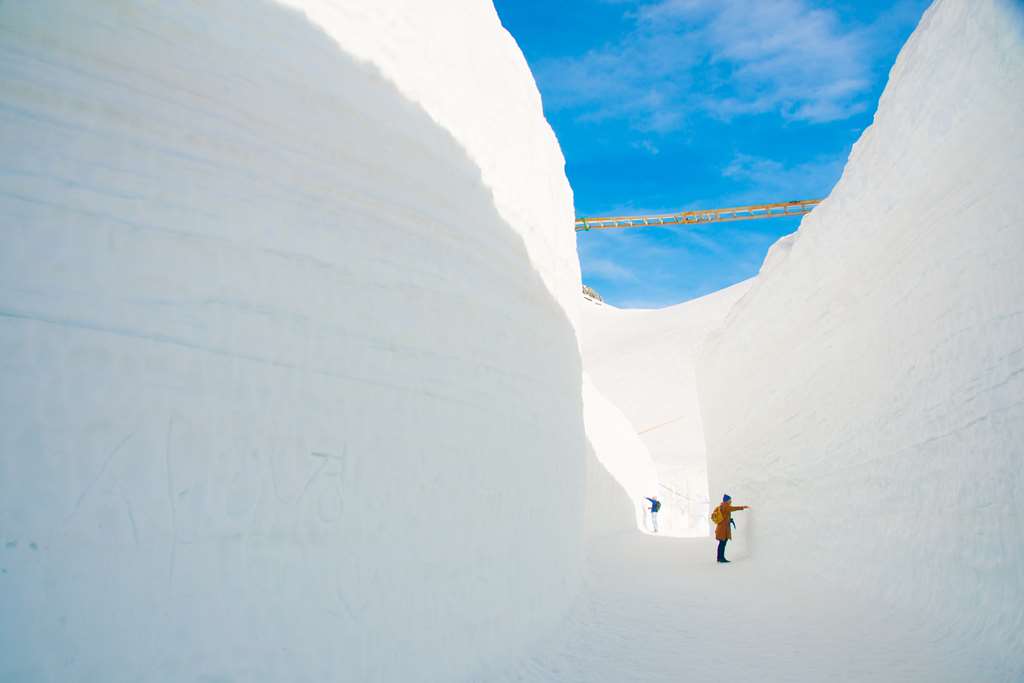
Accessible via the Tateyama Kurobe Alpine Route, this area offers hiking opportunities from Murodo. The views of the mountains and the famous Snow Corridor are highlights.
See More
Basic Information
| Best Season to Visit | Spring to Autumn (April to November). |
| Address | Tateyama, Nakaniikawa District, Toyama 930-1406, Japan |
| Access |
|
| General Hiking Information |
|
| Editorial Note | Tateyama provides an accessible and beautiful hiking experience for beginners. The Mikurigaike Pond trail offers breathtaking alpine scenery and is perfect for those looking to enjoy the natural beauty of the Japanese Alps without the challenge of a strenuous hike. |
Senjojiki Cirque (Nagano)
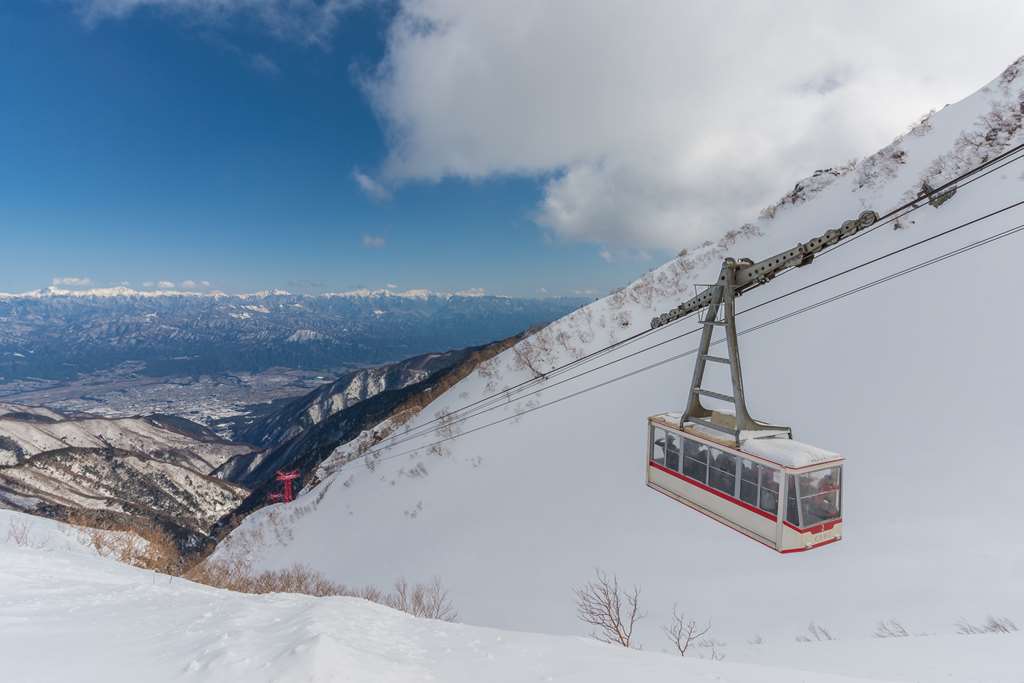
Senjojiki Cirque in Nagano is accessible by ropeway and offers easy trails with breathtaking alpine scenery. The area is especially beautiful in spring and autumn.
See More
Basic Information
| Best Season to Visit | Summer and Autumn (best for colorful foliage). |
| Address | Komagane, Nagano 399-4117, Japan |
| Access |
|
| General Hiking Information |
|
| Editorial Note | Senjojiki Cirque offers a breathtaking alpine experience with relatively easy trails, making it perfect for beginners and families. The panoramic views of the cirque and the lush vegetation in summer, as well as the vibrant autumn colors, provide a stunning backdrop for a memorable hike. |
Kumano Kodo – Nakahechi Route (Wakayama) Must Visit
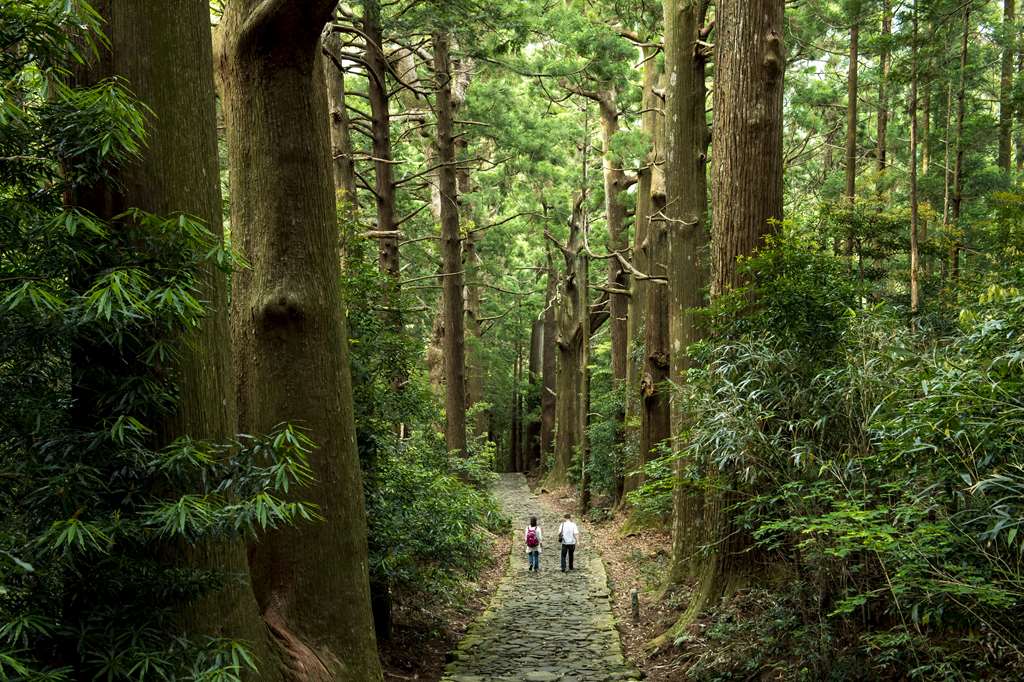
The Nakahechi Route of the Kumano Kodo in Wakayama is part of a World Heritage pilgrimage trail. It is well-marked and offers a cultural hike through historic shrines and beautiful forests.
For the Kumano Kodo, accommodation capacity is limited, so it’s important to book hotels and tours well in advance.
See More
Basic Information
| Best Season to Visit | Spring and Autumn. |
| Address | Tanabe, Wakayama Prefecture, Japan |
| Access |
|
| General Hiking Information |
|
| Editorial Note | The Kumano Kodo – Nakahechi Route offers a unique blend of natural beauty and historical significance. The well-preserved pilgrimage path is perfect for those looking to immerse themselves in Japan’s cultural heritage while enjoying a moderate hike. The journey through ancient forests and serene landscapes is both inspiring and rejuvenating. |
Recommendation 3: Guided Hiking Tours for Safety
Shiretoko Five Lakes (Hokkaido)

Shiretoko Five Lakes in Hokkaido is a part of the Shiretoko Peninsula, a World Natural Heritage site. The trails offer a mix of elevated wooden paths and natural trails, providing an immersive nature experience.
See More
Basic Information
| Best Season to Visit | Spring to Autumn (May to October). |
| Address | Shari, Hokkaido 099-4356, Japan |
| Access |
|
| General Hiking Information |
|
| Editorial Note | Shiretoko Five Lakes offers a pristine hiking experience with breathtaking scenery and diverse wildlife. The easy trails are perfect for beginners and families, allowing everyone to enjoy the natural beauty of Shiretoko National Park. Be sure to check for bear activity and follow all safety guidelines during your visit. |
Daisetsuzan (Hokkaido)

Accessible via the Asahidake Ropeway, the trails around Asahidake in Hokkaido offer beautiful alpine scenery and are popular during the summer and autumn seasons.
See More
Basic Information
| Best Season to Visit | Summer and Autumn (best for colorful foliage). |
| Address | Asahidake Onsen, Higashikawa, Kamikawa District, Hokkaido 071-1472, Japan |
| Access |
|
| General Hiking Information |
|
| Editorial Note | Daisetsuzan’s Asahidake area offers breathtaking alpine scenery with accessible trails suitable for beginners. The ropeway makes it easy to reach high-altitude paths, where you can enjoy the natural beauty of Hokkaido’s highest peak. Be sure to visit in autumn to witness the vibrant foliage. |
Mt. Fuji (Summer Summit Climb) Must Visit

Climbing Mt. Fuji is a bucket-list experience. The Yoshida Trail is recommended for beginners, featuring numerous mountain huts and breathtaking sunrise views from the summit.
Climbing Mount Fuji becomes particularly crowded from late July after the rainy season ends. To see the sunrise from the summit, you’ll need to take a nap at a mountain hut along the way. These huts get very busy, so make sure to book early. Also, reserve your tour before spots run out.
See More
Basic Information
| Best Season to Visit | July to early September (official climbing season). |
| Address | Mount Fuji, Yamanashi and Shizuoka Prefectures, Japan |
| Access |
|
| General Climbing Information |
|
| Editorial Note | Climbing Mount Fuji is a challenging but rewarding experience, offering spectacular views and a sense of accomplishment. Be prepared with appropriate gear, food, and water, and consider staying overnight at a mountain hut to witness the breathtaking sunrise from the summit. Remember to follow safety guidelines and respect the environment. |
Fuji Five Lakes and Aokigahara Forest Must Visit

Aokigahara Forest near Mt. Fuji offers easy trails through the unique and serene forest landscape, with stunning views of the mountain.
The Aokigahara Forest can be dangerous without a knowledgeable local guide, so please be cautious.
See More
Basic Information
| Best Season to Visit | Spring to Autumn (April to November). |
| Address | Fuji Five Lakes Area, Yamanashi Prefecture, Japan |
| Access |
|
| General Hiking Information |
|
| Editorial Note | Exploring the Fuji Five Lakes and Aokigahara Forest with a local guide offers an enriching experience, combining natural beauty with fascinating geological features. The guided tours provide insights into the area’s history, ecology, and folklore, ensuring a safe and memorable adventure. |
Nakasendo Trail Must Visit
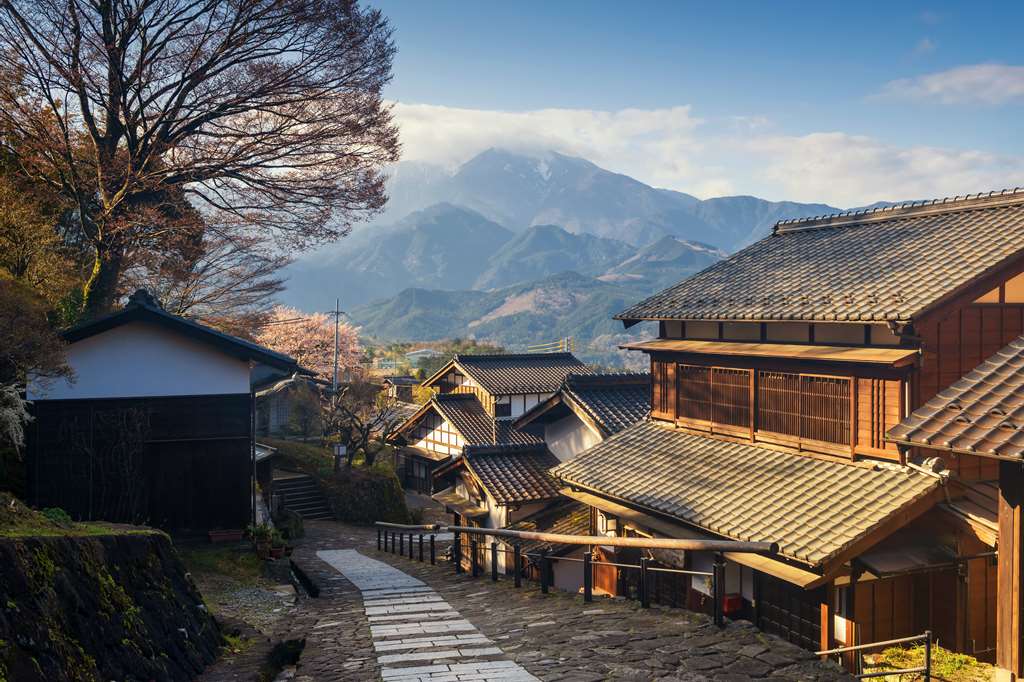
The Nakasendo Trail, especially the section between Magome and Tsumago, offers a historical walk through scenic post towns and beautiful countryside.
Along the Nakasendo Trail, there are not many accommodation options, so early reservations are recommended.
See More
Basic Information
| Best Season to Visit | Spring and Autumn. |
| Address | Nakasendo Trail, Kiso Valley, Nagano and Gifu Prefectures, Japan |
| Access |
|
| General Hiking Information |
|
| Editorial Note | The Nakasendo Trail offers a unique journey through Japan’s history and natural beauty. A guided tour enhances the experience, providing insights into the Edo period, local traditions, and the beautiful landscapes of the Kiso Valley. This hike is perfect for those seeking a cultural and scenic adventure. |
Iya Valley (Tokushima)
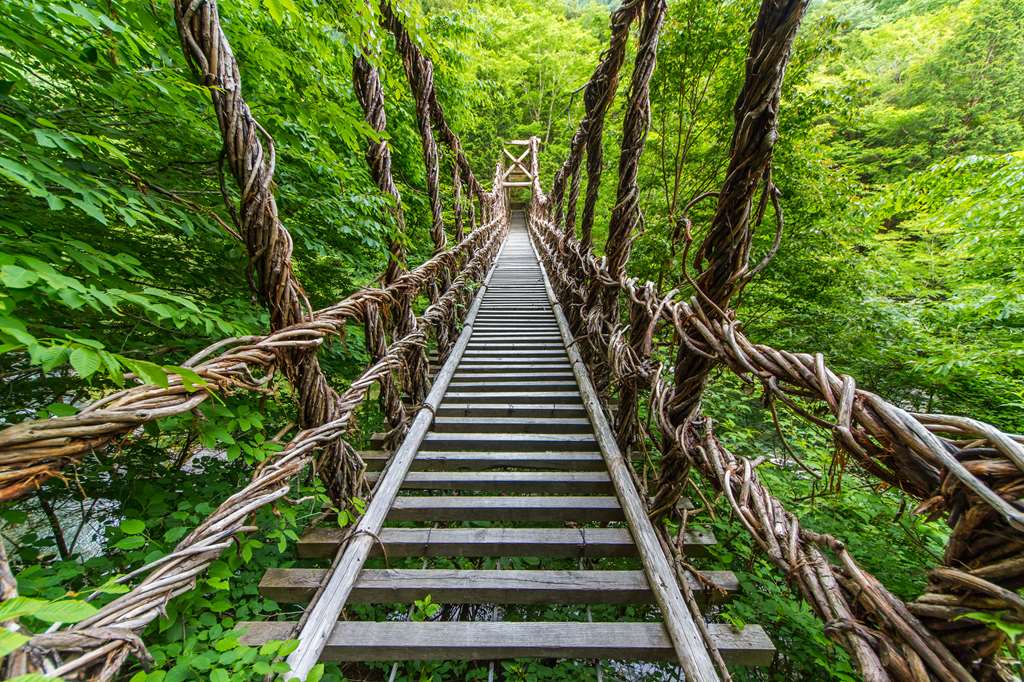
Iya Valley in Tokushima is known for its easy trails and stunning views. The area is rich in natural beauty and cultural sites.
See More
Basic Information
| Best Season to Visit | Spring and Autumn. |
| Address | Iya Valley, Miyoshi, Tokushima 778-0101, Japan |
| Access |
|
| General Hiking Information |
|
| Editorial Note | Iya Valley is a hidden gem offering breathtaking natural beauty and cultural experiences. The Kazurabashi Bridge is a must-see, providing a unique and adventurous way to explore the valley. A guided tour can enhance your visit, offering insights into the area’s history and local traditions. |
Yakushima (Kagoshima)

Yakushima Island, a World Heritage site, offers diverse hiking experiences. The trail to Jomon Sugi, a giant ancient cedar, is popular and well-marked.
Hiking on Yakushima can be quite challenging, so we recommend doing thorough research beforehand and booking a reliable guided tour.
See More
Basic Information
| Best Season to Visit | Spring to Autumn (March to November). |
| Address | Yakushima, Kumage District, Kagoshima Prefecture, Japan |
| Access |
|
| General Hiking Information |
|
| Editorial Note | Yakushima is renowned for its lush, ancient forests and unique wildlife. While the island offers unparalleled natural beauty, hikers should not underestimate the difficulty of some trails. Proper preparation, including good hiking gear, sufficient water, and awareness of weather conditions, is essential for a safe and enjoyable experience. |
Book Early for an Amazing Experience!
There is one crucial point we’d like to emphasize. If you want to experience the best hiking in Japan, it’s essential to gather information and make reservations for hotels and tours as early as possible. Unfortunately, “over-tourism” has become an issue in Japan. The number of international tourists is increasing every year, and popular hiking routes often see hotels fully booked and tours sold out surprisingly early. Last-minute preparations may leave you unable to book your desired accommodations or tours.
Why You Should Book Now
Benefits of Guided Hiking Plans
Through this website, we introduce various guided tours. Guided tours offer significant benefits.
Utilizing guided hiking plans offers several benefits:
1. Safety: Experienced guides ensure you don’t get lost and stay safe.
2. Language Support: English-speaking guides help you overcome language barriers.
3. Weather and Gear Advice: Receive advice on appropriate clothing and gear, ensuring you are well-prepared.
4. Cultural Insights: Learn about local culture and nature from knowledgeable guides.
5. Smooth Navigation: Even on popular trails, guides help you navigate smoothly, reducing stress.
Japanese guides are kind and dedicated to supporting you, enhancing your experience with their expertise. We sincerely hope you have wonderful encounters and enjoy your hiking adventure in Japan.
Amazing adventures await you. Act now and experience the best hiking in Japan!





